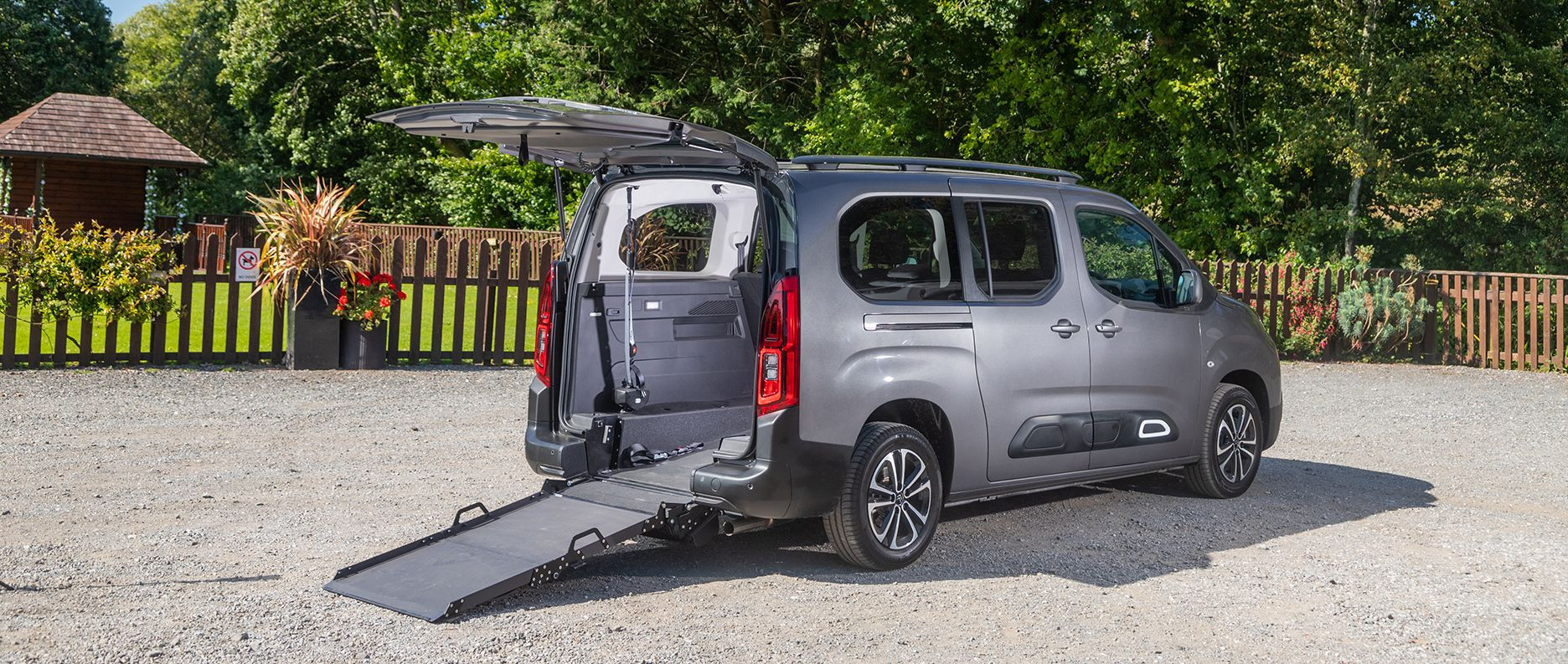
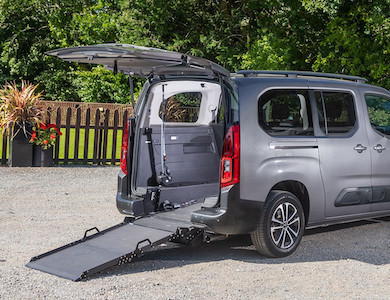
Types of WAV
Wheelchair accessible vehicles come in four size categories – small, medium-small, medium-large and large. At GM Mobility we have an array of vehicle choices for rear passenger and upfront passenger WAVs. The majority provide rear wheelchair access via a ramp or an electric lift. With options for upfront passenger WAVs so that disabled users may sit next to the driver or in the rear cabin alongside the rear passengers.
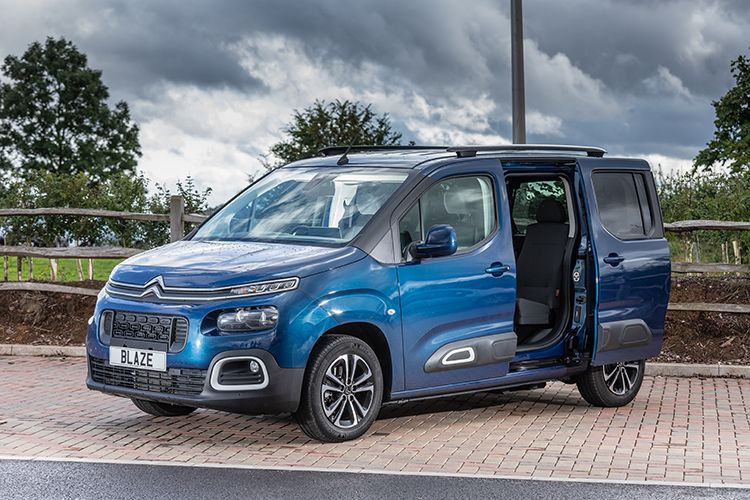
Small WAVs
Base vehicles include: Citroën Berlingo, Ford Tourneo Connect and Volkswagen Caddy.
- All small WAVs will be fitted with a ramp for entry.
- Usually have a lowered floor to give more headroom inside the vehicle and reduce the angle of the ramp
- At least one passenger seat in the rear, but usually seat no more than five people including the driver and wheelchair passenger.
- These WAVs tend to feel the most similar to driving a standard car.
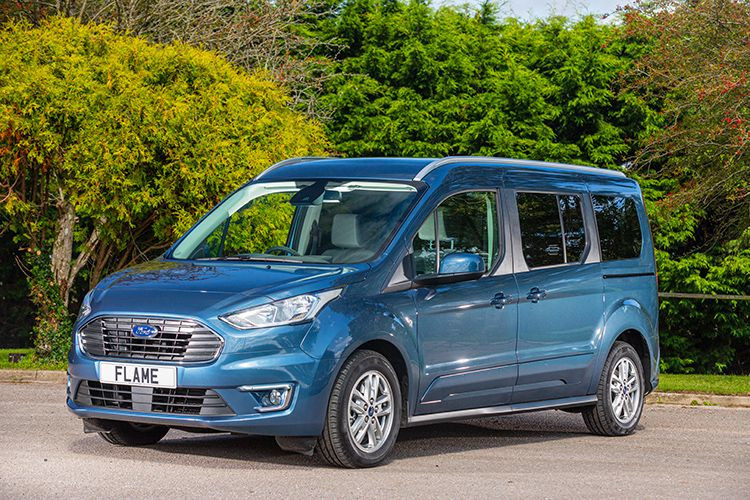
Medium-small WAVs
Base vehicles include: Volkswagen Caddy Maxi and Ford Grand Tourneo Connect
- Have more space than a small WAV which either means extra passenger seats, more room for equipment or a more flexible seating position.
- Like the Small WAVs, these vehicles will have more of a car-like feel in terms of size.
- The wheelchair user can be positioned behind the second row of seats in the rear-most part of the car, but many conversions have options to sit further up in between the second row of rear seats.
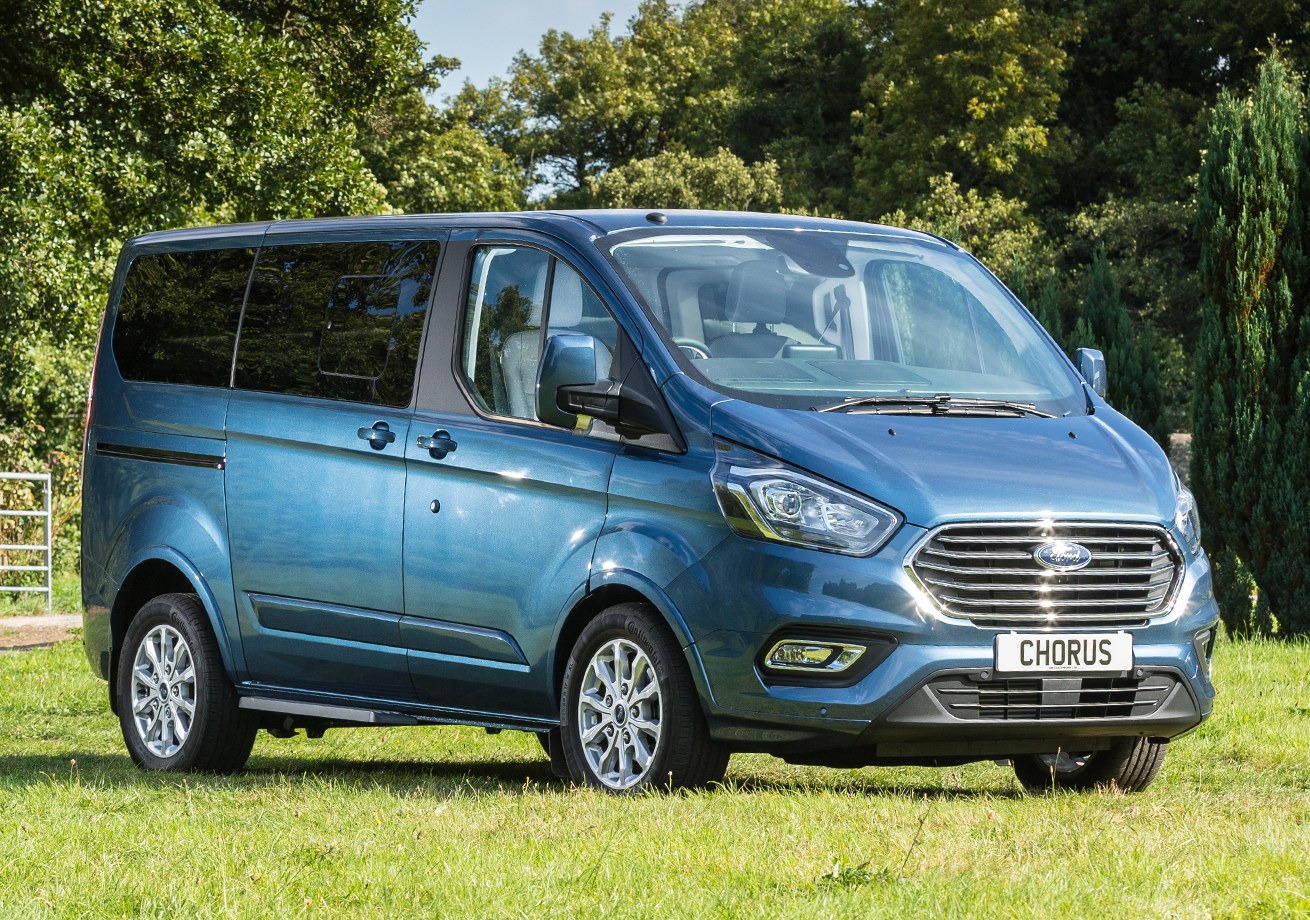
Medium-large WAVs
Base vehicles include: Ford Custom, Peugeot Traveller, Volkswagen Shuttle and Volkswagen Transporter.
- Based on larger vehicles and are the most common WAV for users with larger wheelchairs as their size allows more flexible seating arrangements.
- Can carry up to nine passengers including the wheelchair user and driver.
- Some conversions allow two wheelchair users.
- The majority of medium-large WAVs are still fitted with a ramp, however if you need a lift these can sometimes be fitted, but you should be aware that there will be reduced head height in these cases.
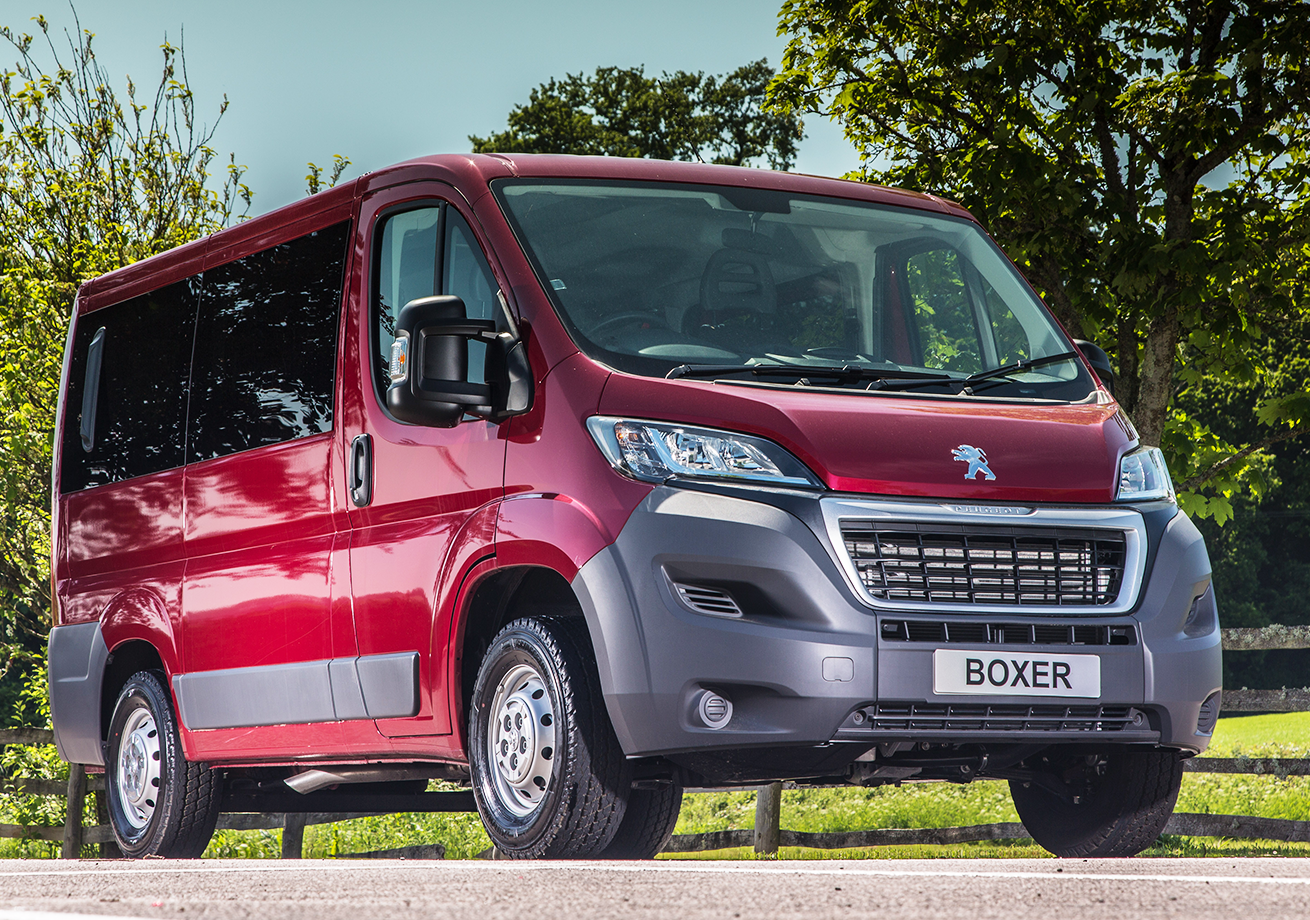
Large WAVs
Base vehicles include: Peugeot Boxer and Fiat Ducato.
- Based on the largest vehicles available on the Scheme and, in terms of size, are more like a commercial vehicle.
- Good for larger families or those travelling in the largest or heaviest wheelchair.
- All large WAVs are fitted with a lift.
- Most can be converted to allow for two wheelchair passengers, as well as space for other passengers in standard seats.
Our wheelchair accessible vehicles offer a variety of access methods for wheelchair users.
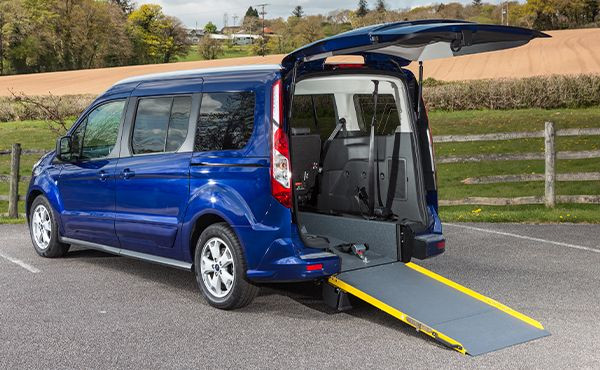
Many WAVs will have had their floor specially lowered to allow enough headroom for the wheelchair user. It also helps make access easier by allowing the ramp to be as short as possible and the angle to be less steep.
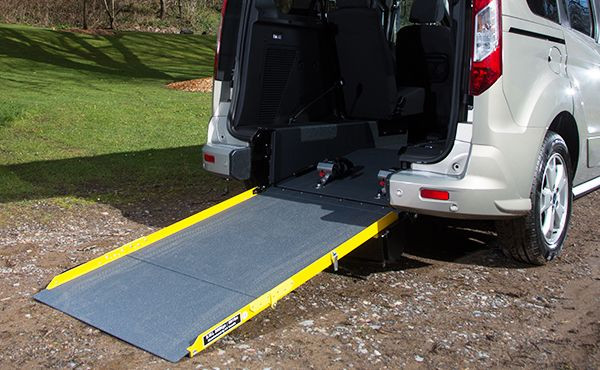
Ramps are the most common way to access a WAV. The ramp is usually manually operated with the carer physically unfolding the ramp from the back of the vehicle. They can be automatic, where the ramp folds and unfolds at the touch of button – however this will cost extra. Some manual ramps are lighter in design, and others can be gas-assisted to make raising and lowering easier.
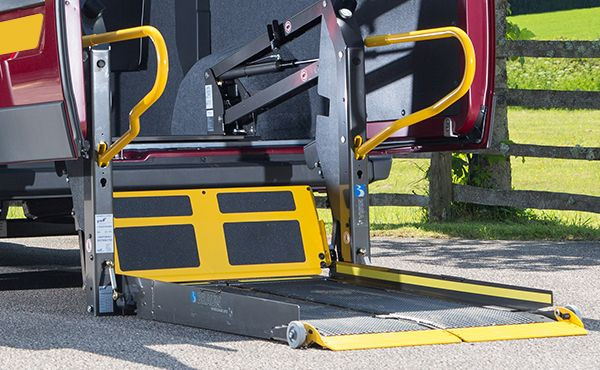
If you opt for a larger WAV, it might have a lift instead of a ramp. This can be a help if your carer has trouble pushing you up a ramp. A lift may cost more than a ramp so you advanced payment could be higher.
The space you have inside a WAV is vitally important – not just for all passengers, but also to accommodate the things you will be travelling with regularly such as shopping or mobility aids.
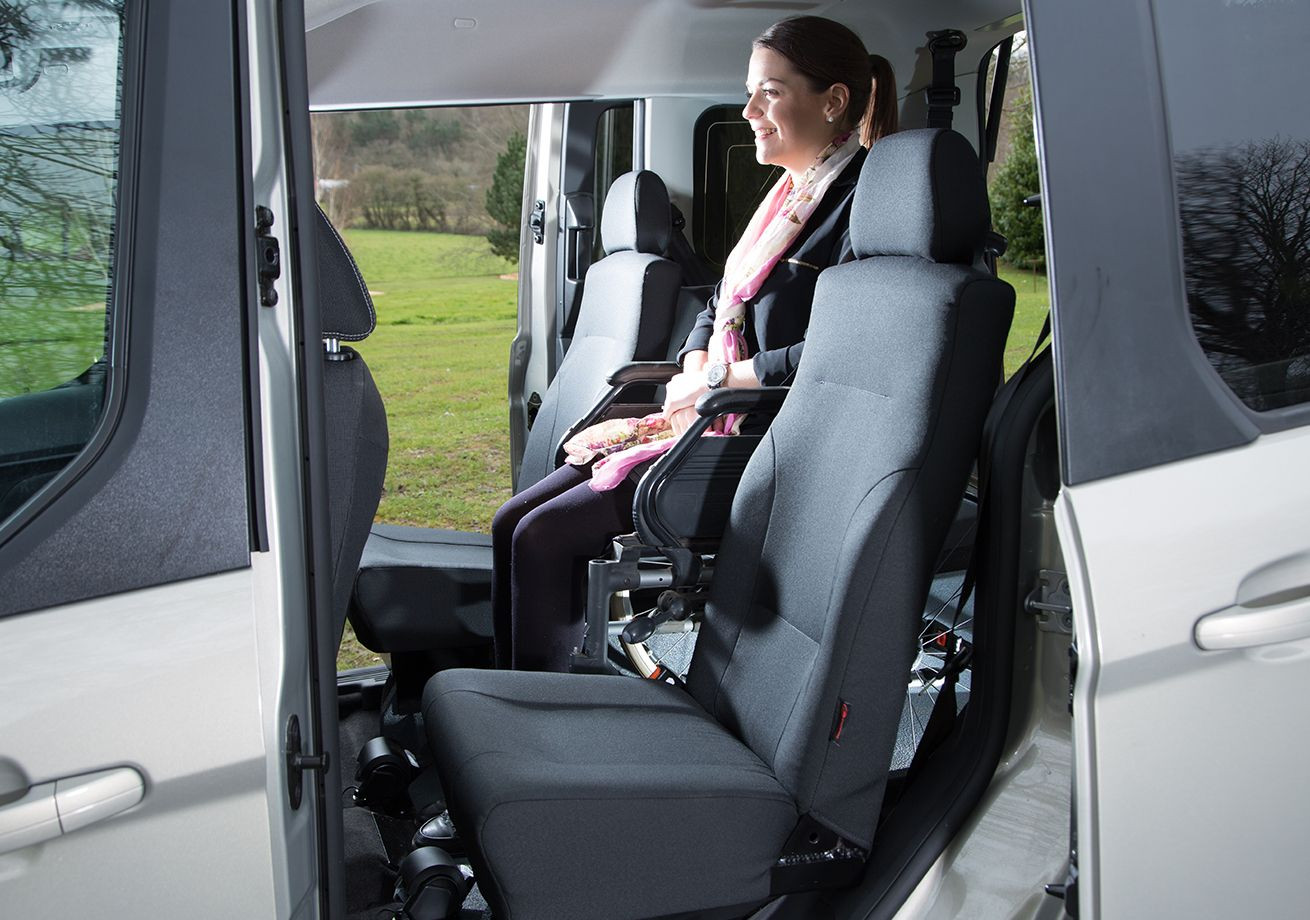
Most WAVs position the wheelchair user in the back of the vehicle, but the actual position can vary quite a lot. Some layouts position the wheelchair user right at the back where the original boot would have been; others try to position the wheelchair user closer behind the driver. The position will affect the travelling experience as the closer forward the wheelchair user is positioned the more inclusive many people find it, however these conversions typically cost more. GM offer a range of vehicles that allow the wheelchair user to sit in the front next to the driver.
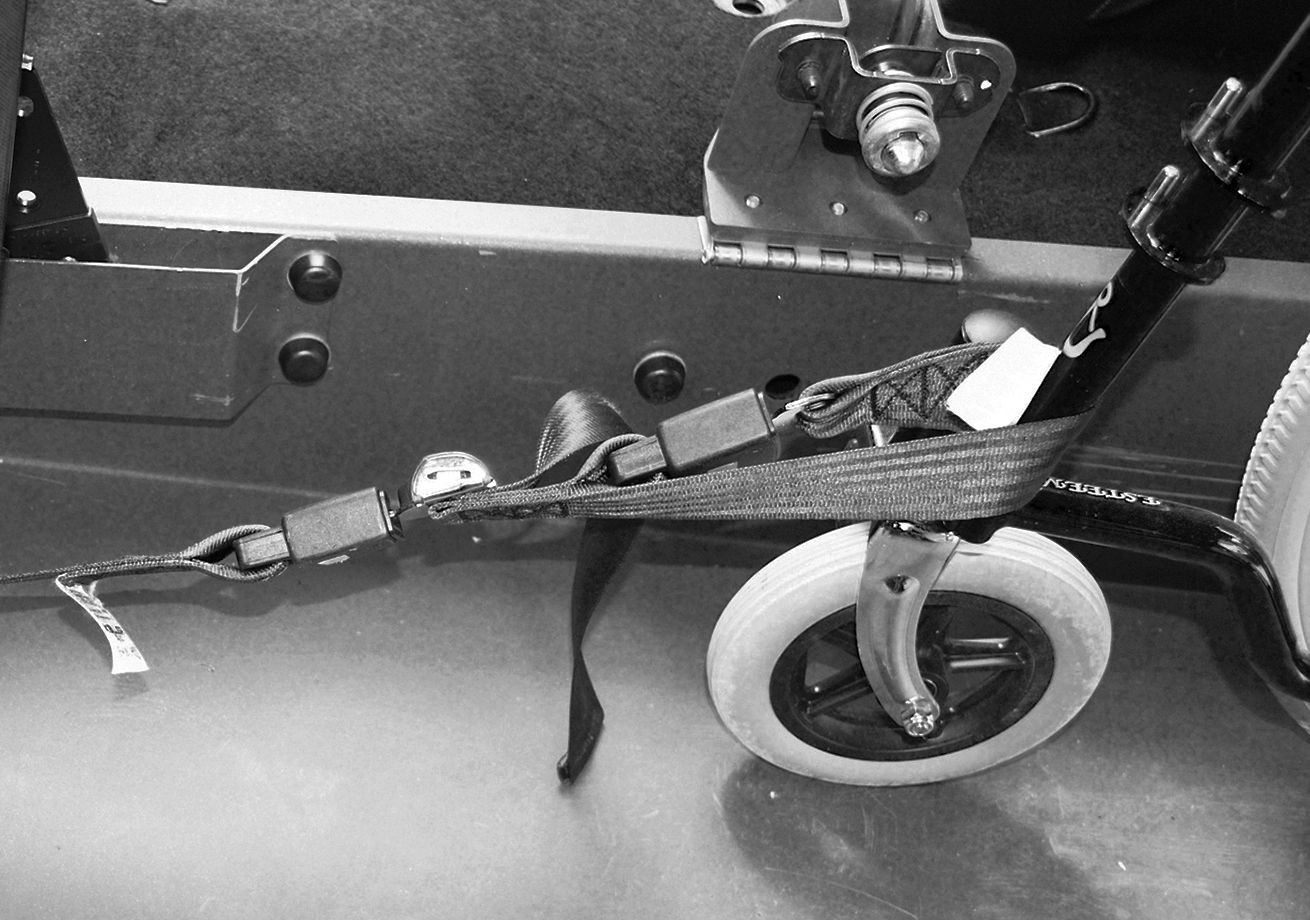
Safety restraints system
All WAVs have a restraint system that has been tested as part of the conversion type approval. Most WAVs have four restraint belts that attach to the front and rear of the wheelchair to keep it in position inside the vehicle. The front restraints are adjustable and are usually self-locking, similar to a seatbelt. They are easily attached to the wheelchair to lock it in place, minimising movement when you are travelling. There are different mechanisms for attaching the restraints to the wheelchair, some of which a carer might find easier to operate than others. An automatic tie-down system is available at additional cost.
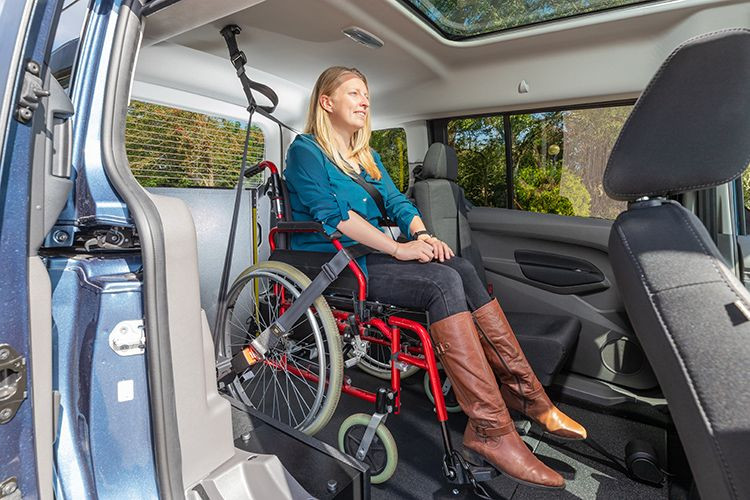
Safety seatbelts
Additionally, the wheelchair user will have an appropriate seatbelt fitted to keep the user safe when travelling. All WAV conversions are tested for safety of the wheelchair user; however some WAVs will be tested with a heavier wheelchair than others. It is important that we know which wheelchair you are currently using and if this is likely to change during the course of your lease so that we can recommend an appropriate WAV and restraint system.
Of course we can! Our friendly team is always on hand to help you find the right WAV for you and your requirements, and can advise on the size options to suit. Get in contact with our team to discuss your needs, and potentially set up a vehicle demonstration!

